Top 20 Vegetables High in Potassium
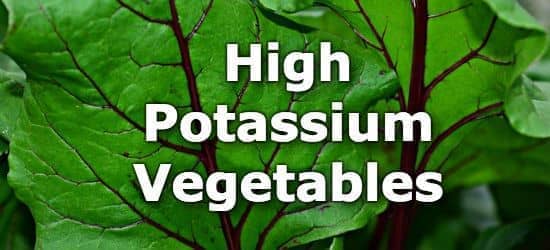
Potassium is an essential nutrient used to maintain fluid and electrolyte balance in the body. It plays a critical role in the transmission of electrical impulses in the heart, muscles, and nervous system. (1)
A deficiency in potassium causes fatigue, irritability, and hypertension (increased blood pressure). (1)
Vegetables high in potassium include beet greens, lima beans, Swiss chard, potatoes, acorn squash, spinach, bok choy, mushrooms, tomatoes, and, sweet potatoes. The current daily value (DV) for potassium is 4700mg. (2)
Below is a list of vegetables high in potassium, for more, see the articles on high potassium foods, and high potassium fruits.
-
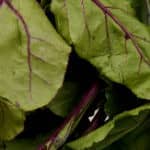 1. Beet Greens (Cooked)
1. Beet Greens (Cooked)
Potassium
per Cup CookedPotassium
per 100gPotassium
per 200 Calories1309mg
(28% DV)909mg
(19% DV)6733mg
(143% DV) -
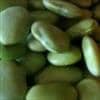 2. Lima Beans (Cooked)
2. Lima Beans (Cooked)
Potassium
per Cup CookedPotassium
per 100gPotassium
per 200 Calories969mg
(21% DV)570mg
(12% DV)927mg
(20% DV) -
 3. Swiss Chard (Cooked)
3. Swiss Chard (Cooked)
Potassium
per Cup CookedPotassium
per 100gPotassium
per 200 Calories961mg
(20% DV)549mg
(12% DV)5490mg
(117% DV) -
 4. Baked Potatoes (With Skin)
4. Baked Potatoes (With Skin)
Potassium
in a Medium PotatoPotassium
per 100gPotassium
per 200 Calories926mg
(20% DV)535mg
(11% DV)1151mg
(24% DV)A 173 gram baked potato without skin provides 676mg (14% DV of potassium). See the complete nutrition comparison of baked potatoes with skin vs no skin.
-
 5. Baked Acorn Squash
5. Baked Acorn Squash
Potassium
per Cup CookedPotassium
per 100gPotassium
per 200 Calories896mg
(19% DV)437mg
(9% DV)1561mg
(33% DV)- 19% DV per cup of baked acorn squash (cubed)
- 12% DV per cup of mashed pumpkin
- 12% DV per cup of boiled butternut squash (cubed)
The average cooked winter squash contains 11% DV of potassium per cup cooked
-
 6. Spinach (Cooked)
6. Spinach (Cooked)
Potassium
per Cup CookedPotassium
per 100gPotassium
per 200 Calories839mg
(18% DV)466mg
(10% DV)4052mg
(86% DV) -
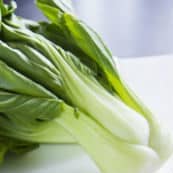 7. Pak-Choi (Bok Choy) (Cooked)
7. Pak-Choi (Bok Choy) (Cooked)
Potassium
per Cup CookedPotassium
per 100gPotassium
per 200 Calories631mg
(13% DV)371mg
(8% DV)6183mg
(132% DV) -
 8. White Button Mushrooms (Cooked)
8. White Button Mushrooms (Cooked)
Potassium
per Cup CookedPotassium
per 100gPotassium
per 200 Calories555mg
(12% DV)356mg
(8% DV)2543mg
(54% DV)Other Mushrooms High in Potassium
- 8% DV per cup of cremini mushrooms
- 7% DV per cup of portobello mushrooms
- 6% DV per cup of chantarelle mushrooms
- 6% DV per cup of morel mushrooms
- 4% DV per cup of shiitake mushrooms
-
 9. Sweet Potatoes (Mashed)
9. Sweet Potatoes (Mashed)
Potassium
per Cup MashedPotassium
per 100gPotassium
per 200 Calories536mg
(11% DV)210mg
(4% DV)416mg
(9% DV) -
 10. Tomato (Cooked)
10. Tomato (Cooked)
Potassium
per Cup CookedPotassium
per 100gPotassium
per 200 Calories523mg
(11% DV)218mg
(5% DV)2422mg
(52% DV) -
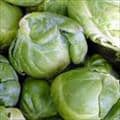 11. Brussels Sprouts (Cooked)
11. Brussels Sprouts (Cooked)
Potassium
per Cup CookedPotassium
per 100gPotassium
per 200 Calories495mg
(11% DV)317mg
(7% DV)1761mg
(37% DV) -
 12. Zucchini (Cooked)
12. Zucchini (Cooked)
Potassium
per Cup CookedPotassium
per 100gPotassium
per 200 Calories475mg
(10% DV)264mg
(6% DV)3520mg
(75% DV) -
 13. Broccoli (Cooked)
13. Broccoli (Cooked)
Potassium
per Cup CookedPotassium
per 100gPotassium
per 200 Calories457mg
(10% DV)293mg
(6% DV)1674mg
(36% DV) -
 14. Artichokes (Cooked)
14. Artichokes (Cooked)
Potassium
per Cup CookedPotassium
per 100gPotassium
per 200 Calories444mg
(9% DV)264mg
(6% DV)1173mg
(25% DV) -
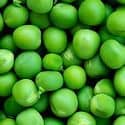 15. Green Peas (Cooked)
15. Green Peas (Cooked)
Potassium
per Cup CookedPotassium
per 100gPotassium
per 200 Calories434mg
(9% DV)271mg
(6% DV)645mg
(14% DV) -
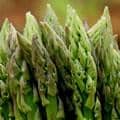 16. Asparagus (Cooked)
16. Asparagus (Cooked)
Potassium
per Cup CookedPotassium
per 100gPotassium
per 200 Calories403mg
(9% DV)224mg
(5% DV)2036mg
(43% DV) -
 17. Sweet Corn (Cooked)
17. Sweet Corn (Cooked)
Potassium
per Cup CookedPotassium
per 100gPotassium
per 200 Calories392mg
(8% DV)270mg
(6% DV)628mg
(13% DV) -
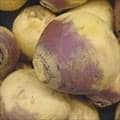 18. Rutabagas (Swedes, Neeps) (Cooked)
18. Rutabagas (Swedes, Neeps) (Cooked)
Potassium
per Cup CookedPotassium
per 100gPotassium
per 200 Calories367mg
(8% DV)216mg
(5% DV)1440mg
(31% DV) -
 19. Fennel (Cooked)
19. Fennel (Cooked)
Potassium
per CupPotassium
per 100gPotassium
per 200 Calories360mg
(8% DV)414mg
(9% DV)2671mg
(57% DV) -
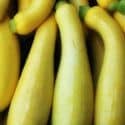 20. Summer Squash (Cooked)
20. Summer Squash (Cooked)
Potassium
per Cup CookedPotassium
per 100gPotassium
per 200 Calories346mg
(7% DV)192mg
(4% DV)1920mg
(41% DV)
Less Common Potassium Rich Vegetables
| Food | Serving | Potassium |
|---|---|---|
| 1. Yams | per cup | 26% DV (1224mg) |
| 2. Yautia | per cup | 17% DV (807mg) |
| 3. Bamboo Shoots | per cup cooked | 14% DV (640mg) |
| 4. Taro | per cup cooked | 14% DV (639mg) |
| 5. Kohlrabi | per cup cooked | 12% DV (561mg) |
| 6. Mustard Spinach | per cup cooked | 11% DV (513mg) |
| 7. Jute Potherb (Molokhiya) | per cup cooked | 10% DV (479mg) |
| 8. Celeriac | per cup | 10% DV (468mg) |
| 9. Pea Sprouts | per cup | 10% DV (457mg) |
| 10. Bittermelon | per cup cooked | 8% DV (396mg) |
How much potassium do you need each day?
The daily value (%DV) for Potassium is 4700mg which is a general target intended for most people. Adequate intakes (%AI) take age and gender into account and range from 2000mg - 3400mg for most people.
| Life Stage | AI | Infants |
|---|---|
| 0-6 months old | 400mg |
| 7-12 months old | 860mg |
| Children | |
| 1-3 years old | 2000mg |
| 4-8 years old | 2300mg |
| Males | |
| 9-13 years old | 2500mg |
| 14-18 years old | 3000mg |
| 19+ years old | 3400mg |
| Females | |
| 9-13 years old | 2300mg |
| 14-18 years old | 2300mg |
| 19+ years old | 2600mg |
| Pregnancy | |
| 14-18 years old | 2600mg |
| 19+ years old | 2900mg |
| Lactation | |
| 14-18 years old | 2500mg |
| 19-30 years old | 2800mg |
From the Nutrient Ranking Tool
Use the ranking tool links below to select foods and create your own food list to share or print.
- Foods High in Potassium
- Foods Low in Potassium
- Vegetables High in Potassium
- Fruits High in Potassium
- Vegetarian Foods High in Potassium
- Nuts High in Potassium
- Grains High in Potassium
- Beans High in Potassium
- Dairy High in Potassium
- Breakfast Cereals High in Potassium
- Fast Foods High in Potassium
View more nutrients with the nutrient ranking tool, or see ratios with the nutrient ratio tool.
Related
Data Sources and References
- Grimm PR, Coleman R, Delpire E, Welling PA. Potassium modulates electrolyte balance and blood pressure through effects on distal cell voltage and chloride J Am Soc Nephrol. 2017 Sep;28(9):2597-2606. doi: 10.1681/ASN.2016090948. Epub 2017 Apr 25. 28442491
- U.S.FDA - Daily Value on the New Nutrition and Supplement Facts Labels
Try the recipe nutrition calculator, or daily meal planner.
Create a free account to log and track foods.


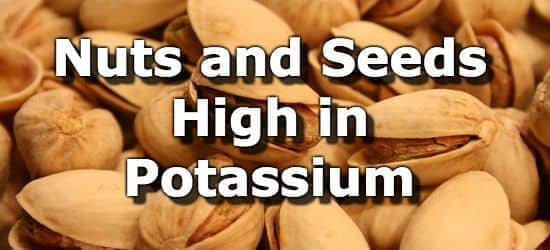 Next ➞
Next ➞